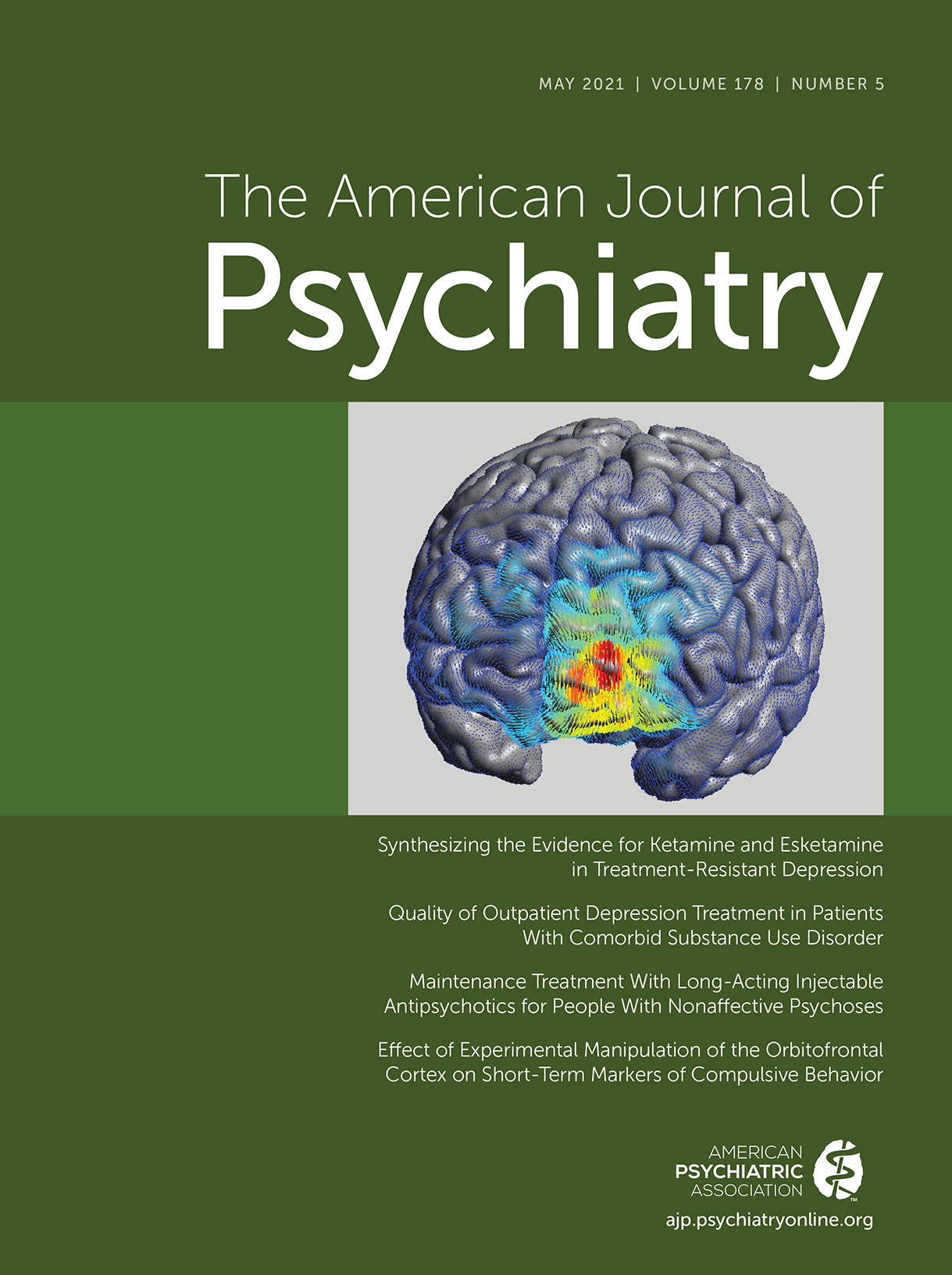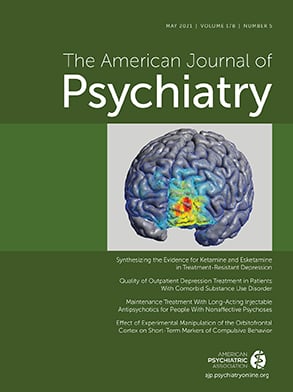Funding Information
Dr. McIntyre has received grant/research support from CIHR/GACD/ Chinese National Natural Research Foundation and speaking or consultation fees from AbbVie, Bausch Health, Eisai, Intra-Cellular, Janssen, Kris, Lundbeck, Minerva, Neurocrine, Novo Nordisk, Eli Lilly, Otsuka, Pfizer, Purdue, Sunovion, and Takeda; he is also the CEO of Champignon Brands, Inc. Dr. Rosenblat is the medical director of the Canadian Rapid Treatment Center of Excellence (a fully owned subsidiary of Champignon Brands, Inc.) which provides ketamine and esketamine treatment for depression; he has received research grant support from the American Psychiatric Association, the American Society of Psychopharmacology, the Canadian Cancer Society, the Canadian Psychiatric Association, the Joseph M. West Family Memorial Fund, the Timeposters Fellowship, the University Health Network Centre for Mental Health, and the University of Toronto and speaking, consultation, or research fees from Allergan, COMPASS, Janssen, Lundbeck, and Sunovion. Dr. Nemeroff has received research support or grants from NIH; he has served as a consultant for Acadia, Axsome, BioXcel Therapeutics, EMA Wellness, Intra-Cellular Therapies, Janssen Research and Development, Magstim, Navitor, Sage, Signant Health, Silo Pharma, Sunovion, and Taisho Pharmaceutical; he holds stock in Antares, BI Gen Holdings, Corcept Therapeutics, EMA Wellness, Seattle Genetics, and Xhale; he is on the scientific advisory boards for the Anxiety Disorders Association of America (ADAA), the Brain and Behavior Research Foundation, the Laureate Institute for Brain Research, Magnolia CNS Signant Health, and Skyland Trail and on the board of directors for ADAA, Gratitude America, and Xhale Smart; he has income sources or equity of $10,000 or more from American Psychiatric Publishing, CME Outfitters, EMA Wellness, Intra-Cellular Therapies, Signant Health, Takeda, and Xhale; and he has patents for a method and devices for transdermal delivery of lithium (US 6,375,990B1) and a method of assessing antidepressant drug therapy via transport inhibition of monoamine neurotransmitters by ex vivo assay (US 7,148,027B2). Dr. Sanacora has served as a consultant for Allergan, Alkermes, AstraZeneca, Avanir, Axsome Therapeutics, Biohaven Pharmaceuticals, Boehringer Ingelheim, Bristol-Myers Squibb, Clexio Biosciences, Denovo Biopharma, Engrail Therapeutics, EMA Wellness, Epiodyne, Hoffman–La Roche, Intra-Cellular Therapies, Janssen, Lundbeck, Merck, Naurex, Navitor, Neurocrine, Novartis, Noven Pharmaceuticals, Otsuka, Perception Neuroscience, Praxis Therapeutics, Sage, Servier, Taisho, Teva, Valeant, Vistagen Therapeutics, and XW Labs; he has received research contracts from AstraZeneca, Bristol-Myers Squibb, Eli Lilly, Johnson & Johnson, Hoffman–La Roche, Merck, Naurex, Servier, and Usona; he holds equity in BioHaven Pharmaceuticals; and he is a co-inventor on a U.S. patent (#8,778,979) held by Yale University and a co-inventor on U.S. Provisional Patent Application No. 047162-7177P1 (00754) filed by the Yale University Office of Cooperative Research. Dr. Murrough has served as a consultant and/or on advisory boards for Allergan, Boehringer Ingelheim, Clexio Biosciences, Engrail Therapeutics, Fortress Biotech, FSV7, Global Medical Education, Impel Neuropharma, Janssen Research and Development, MedAvante-Prophase, Novartis, Otsuka, and Sage; he is named on a patent pending for neuropeptide Y as a treatment for mood and anxiety disorders and on a patent pending for the use of ezogabine and other KCNQ channel openers to treat depression and related conditions. The Icahn School of Medicine (employer of Dr. Murrough) is named on a patent and has entered into a licensing agreement and will receive payments related to the use of ketamine or esketamine for the treatment of depression; the Icahn School of Medicine is also named on a patent related to the use of ketamine for the treatment of PTSD; Dr. Murrough is not named on these patents and will not receive any payments. Dr. Berk is supported by a National Health and Medical Research Council Senior Principal Research Fellowship (1059660 and 1156072); he has received grant/research support from the a2 Milk Company, Avant, Beyond Blue, the Cancer Council of Victoria, the Cooperative Research Centre, the Harry Windsor Foundation, NIH, the Meat and Livestock Board, the Medical Benefits Fund, the Medical Research Futures Fund, the National Health and Medical Research Council, Rotary Health, the Simons Autism Foundation, the Stanley Medical Research Foundation, and Woolworths and has served as a speaker for Abbott, AstraZeneca, Janssen, Lundbeck, Merck, and Pfizer and as a consultant for Allergan, AstraZeneca, BioAdvantex, Bionomics, Collaborative Medicinal Development, Janssen, Lundbeck, Merck, Pfizer, and Servier. Dr. Brietzke has received research funding from CAPES, CNPq, the Faculty of Health Sciences and the Department of Psychiatry of Queen’s University, FAPESP, and SEAMO and has received speaking or advisory board honoraria from Daiichi-Sankyo and Lundbeck and conference travel/support from Daiichi-Sankyo and Janssen. Dr. Dodd has received grant/research support from the Australian Rotary Health Research Fund, Beyond Blue, Eli Lilly, Fondation FondaMental, the Geelong Medical Research Foundation, GlaxoSmithKline, Mayne Pharma, the National Health and Medical Research Council, Organon, the Simons Foundation, the Stanley Medical Research Institute, and Servier, speaking fees from Eli Lilly, advisory board fees from Eli Lilly and Novartis, and conference travel support from Servier. Dr. Gorwood has received fees for presentations at congresses or participation in scientific boards from Alcediag-Alcen, Angelini, GlaxoSmithKline, Janssen, Lundbeck, Otsuka, Sage, and Servier. Dr. Iosifescu has received consulting honoraria from Alkermes, Allergan, Axsome, Centers for Psychiatric Excellence, Global Medical Education, Jazz, Lundbeck, Otsuka, Precision Neuroscience, Sage, and Sunovion and research support (through his academic institution) from Alkermes, AstraZeneca, BrainsWay, LiteCure, NeoSync, Otsuka, Roche, and Shire. Dr. Kasper has received grant/research support from Lundbeck; he has served as a consultant or on advisory boards for Celgene, IQVIA, Janssen, Lundbeck, Mundipharma, Recordati, Takeda, and Schwabe; and he has served on speakers bureaus for Angelini, Aspen Farmaceutica, Janssen, Krka Pharma, Lundbeck, Medichem Pharmaceuticals, Neuraxpharma, OM Pharma, Pierre Fabre, Sanofi, Servier, Schwabe, and Sun Pharma. Mr. Kratiuk is the vice president of operations for the Canadian Rapid Treatment Center of Excellence (a fully owned subsidiary of Champignon Brands, Inc.), which provides ketamine and esketamine treatment for depression. Ms. Y. Lee has received personal fees from Champignon Brands, Inc. Dr. Papakostas has served as a consultant for Abbott, Alkermes, AstraZeneca, Avanir, BrainsWay, Bristol-Myers Squibb, Cephalon, Dey Pharma, Eli Lilly, Evotec, GlaxoSmithKline, Inflabloc Pharmaceuticals, Jazz, Lundbeck, Methylation Sciences, Novartis, Otsuka, Pamlab, Pfizer, Pierre Fabre Laboratories, Ridge Diagnostics (formerly Precision Human Biolaboratories), Shire, Sunovion, Takeda, Theracos, and Wyeth; on behalf of Massachusetts General Hospital, he has served as a consultant for Acadia, Alphasigma USA, Axsome Therapeutics, Boston Pharmaceuticals, Cala Health, Genentech, Genomind, Janssen Global Services, Johnson & Johnson, Mylan, One Carbon Therapeutics, Osmotica Pharmaceutical, Sage, and Taisho; he has received honoraria for lectures or consultancy from Abbott, Acadia, Alkermes, Alphasigma USA, Asopharma America Central Y Caribe, AstraZeneca, Avanir, Bristol-Myers Squibb, BrainsWay, Cephalon, Dey Pharma, Eli Lilly, Evotec, Forest, GlaxoSmithKline, Inflabloc Pharmaceuticals, Grunbiotics, Hypera, Jazz, Lundbeck, Medichem Pharmaceuticals, Meiji Seika Pharma, Novartis, Otsuka, Pamlab, Pfizer, Pharma Trade SAS, Pierre Fabre Laboratories, Ridge Diagnostics, Shire, Sunovion, Takeda, Theracos, Titan Pharmaceuticals, and Wyeth; he has received research support (paid to hospital) from AstraZeneca, Bristol-Myers Squibb, Cala Health, Forest, NIMH, Mylan, Neuralstem, Pamlab, the Patient-Centered Outcomes Research Institute, Pfizer, Johnson & Johnson, Ridge Diagnostics, Sunovion, Tal Medical, and Theracos; and he has served on the speakers bureaus for Bristol-Myers Squibb and Pfizer. Dr. Thase has served as an adviser or consultant for Acadia, Akili, Alkermes, Allergan, Axsome, BioHaven, Clexio Pharma, Gerson Lehrman Group, Jazz, Johnson & Johnson (Janssen), Lundbeck, Merck, Otsuka, Pfizer, Sage, Seelos, Sunovion, and Takeda; he has received grant support from Acadia, Allergan, AssureRx Health, Axsome Therapeutics, BioHaven, Intracellular, Johnson & Johnson, Otsuka, the Patient-Centered Outcomes Research Institute, and Takeda; and he has received royalties from the American Psychiatric Foundation, Guilford Publications, Herald House, Kluwer-Wolters, and W.W. Norton; his spouse is employed by Peloton Advantage. Dr. Vieta has received grants and served as consultant, adviser, or CME speaker for AB-Biotics, Abbott, Allergan, Angelini, Dainippon Sumitomo Pharma, Ferrer, Gedeon Richter, Janssen, Lundbeck, Otsuka, Sage, Sanofi-Aventis, and Takeda. Dr. Young is a principal investigator on a study of intranasal esketamine in treatment-resistant depression sponsored by Janssen (ESKETINTRD3004); he has received speaking and advisory board fees from Allegan, AstraZeneca, Bionomics, COMPASS, Eli Lilly, Janssen, LivaNova, Lundbeck, Sunovion, Servier, and Sumitomo Dainippon Pharma; he has received grant funding from the British Medical Association, the Canadian Institutes of Health Research, the CCS Depression Research Fund, Janssen, the Michael Smith Foundation for Health Research, the MRC, NARSAD, NIHR, NIMH, the Royal College of Physicians of Edinburgh, the Stanley Medical Research Institute, Wellcome Trust, the VGH and UBC Hospital Foundation, and Western Economic Diversification Canada. Dr. Zarate is listed as a co-inventor on a patents for the use of ketamine in major depression and suicidal ideation and for the use of ketamine metabolites in the treatment of depression and neuropathic pain, and as a co-inventor on a patent application for the use of ketamine metabolites in the treatment of depression, anxiety, anhedonia, suicidal ideation, and posttraumatic stress disorders; he has assigned his patent rights to the U.S. government but will share a percentage of any royalties that may be received by the government. Dr. Stahl has served as a consultant for Acadia, Alkermes, Allergan, Arbor Pharmaceuticals, Axovant, Axsome, Celgene, Concert, Clearview, EMD Serono, Eisai, Eli Lilly, Ferring, Impel NeuroPharma, Intra-Cellular Therapies, Ironshore Pharmaceuticals, Janssen, Lundbeck, Merck, Otsuka, Pfizer, Sage, Servier, Shire, Sunovion, Takeda, Taliaz, Teva, Tonix, Tris Pharma, and Viforpharma; he is a board member of Genomind; he has served on speakers bureaus for Acadia, Lundbeck, Otsuka, Perrigo, Servier, Sunovion, Takeda, and Vertex; and he has received grant/research support from Acadia, Avanir, Braeburn Pharmaceuticals, Eli Lilly, Intra-Cellular Therapies, Ironshore, ISSWSH, Neurocrine, Otsuka, Shire, Sunovion, and TMS NeuroHealth Centers. The other authors report no financial relationships with commercial interests.

